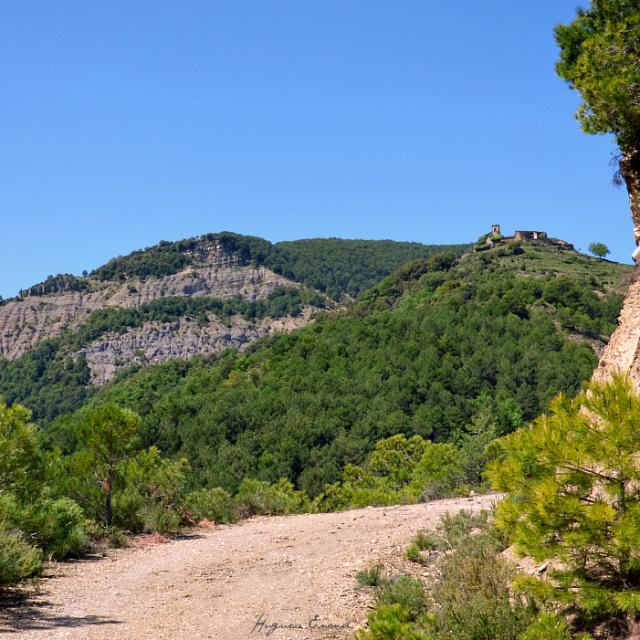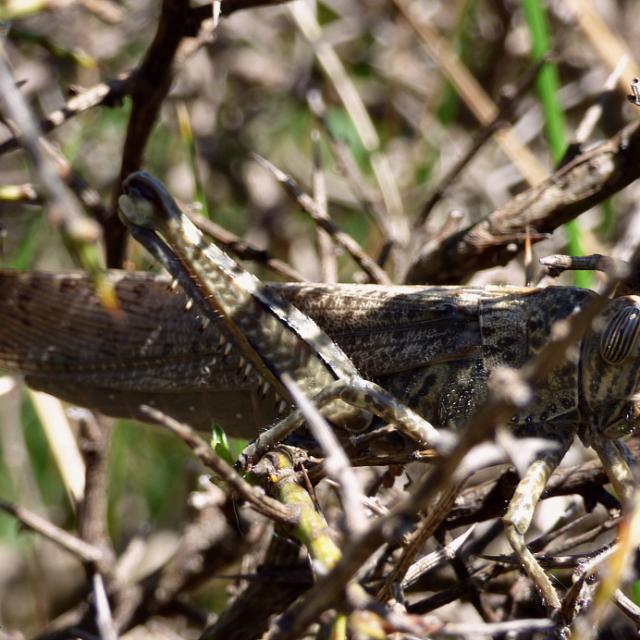A place where the scent of rosemary mingles with that of boxwood and broom.
 P1020066-1
P1020066-1 P1020104-1
P1020104-1par Hugues ENOND
 P1020066-1
P1020066-1 P1020069-1
P1020069-1 P1020087-1
P1020087-1 P1020106-1
P1020106-1After leaving the car on the outskirts of Escalona, I set off on foot up the road (passable only by 4×4) and its four kilometers under a blazing sun. A complete change of scenery after the snowshoe hike in the Néouvielle the day before: under the fir trees, the scent of rosemary mingles with that of boxwood and broom. Distracted by this atmosphere, it’s the flight of a vulture a few meters above my head that brings me back to reality: my footsteps must have disturbed it. The conclusion is clear: I’m not going to meet many people today!
After a few minutes, however, I’m lucky enough to spot an impressive (Egyptian?) cricket about 5 cm long!
A few hairpin bends higher up, I finally catch sight of the village on its promontory: a modest bell tower and a large, gutted building.
I continue on my way to the village entrance, overlooked on the left by the church and several dwellings, while more modest buildings are scattered along the road that threads further up the hillside. Vegetation more or less covers the terraces, remnants of past farming activity, at the foot of the foundations.
The view is magnificent,from Lake Mediano in the south to the Anisclo cañon in the north, at the foot of the snow-capped peaks.
 P1020082-1
P1020082-1I enter the steep, narrow “grand-ruelle” that winds between the houses, littered with rubble and lauzes, the stone slabs that make up the roofs of traditional houses. Desolation is everywhere, right up to the porch of the 16th-century church of Santa Maria.
The door, set inside, and the faded blue paintings are protected from the intrusion of herds by a metal barrier sealed at its entrance.
 P1020085-1
P1020085-1I then skirt around the church to reach the small cemetery where a few crosses remain drowned in the grass, in the shadow of the bell tower, whose bell struck in 1691 has kept silent for decades.
 P1020095-1
P1020095-1Reassured, I resume my visit by joining these more scattered constructions, far from the village. In the first of these, the metal structure of a bed lies beneath the remains of the collapsed floor and roof. Under what conditions have the villagers deserted their homes?
With the visit over, I set off again with the bitter feeling of having witnessed the sacrifice of this village, reinforced by the impression that its position and paradisiacal surroundings should have made it a setting conducive to the well-being of its inhabitants.
Many of these “deshabitados” villages have benefited from restoration in recent decades and are now enjoying a new lease of life, mainly for tourism, in the image of Liguerre de Cinca, El Pueyo de Araguas, Morillo